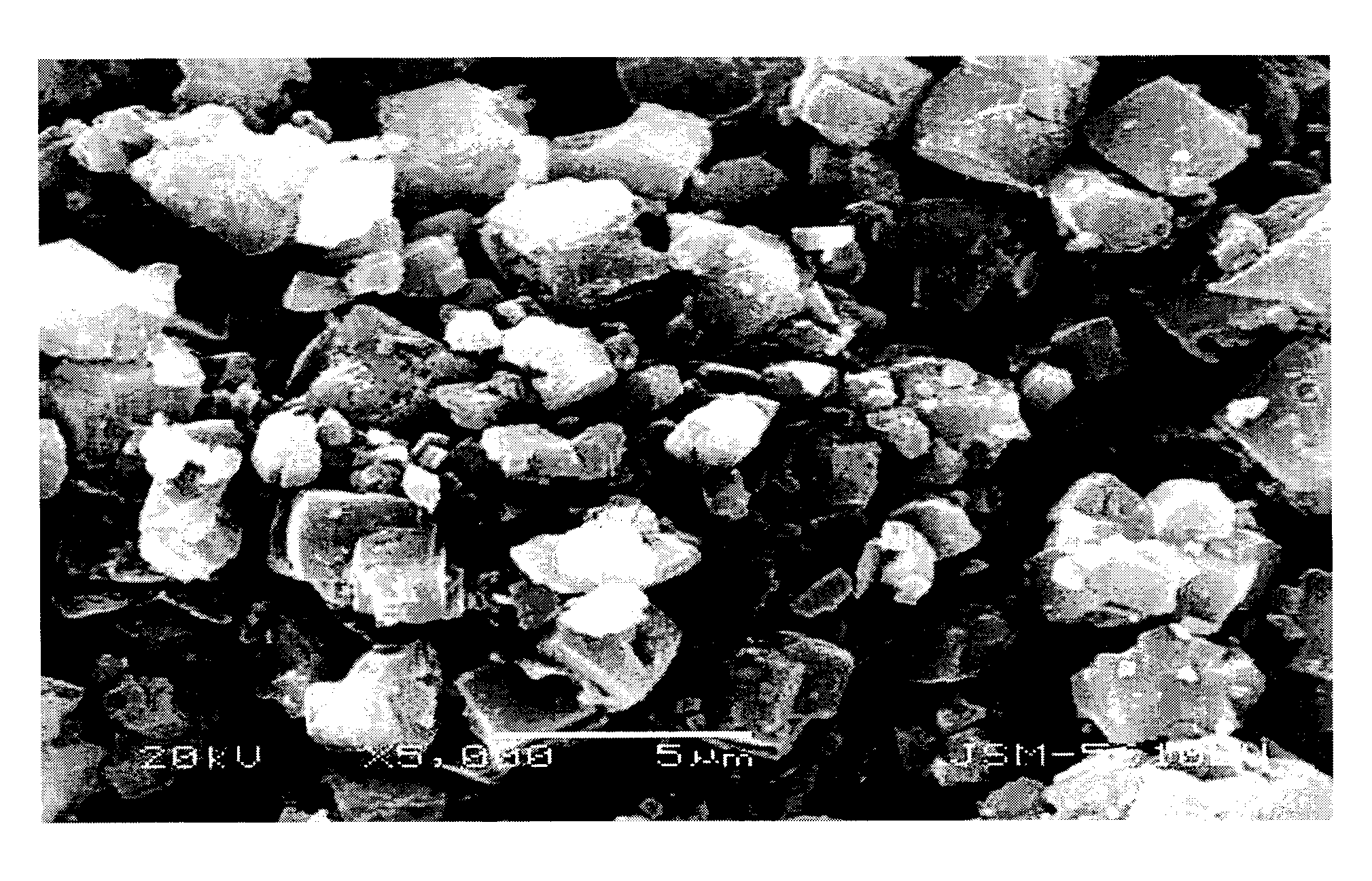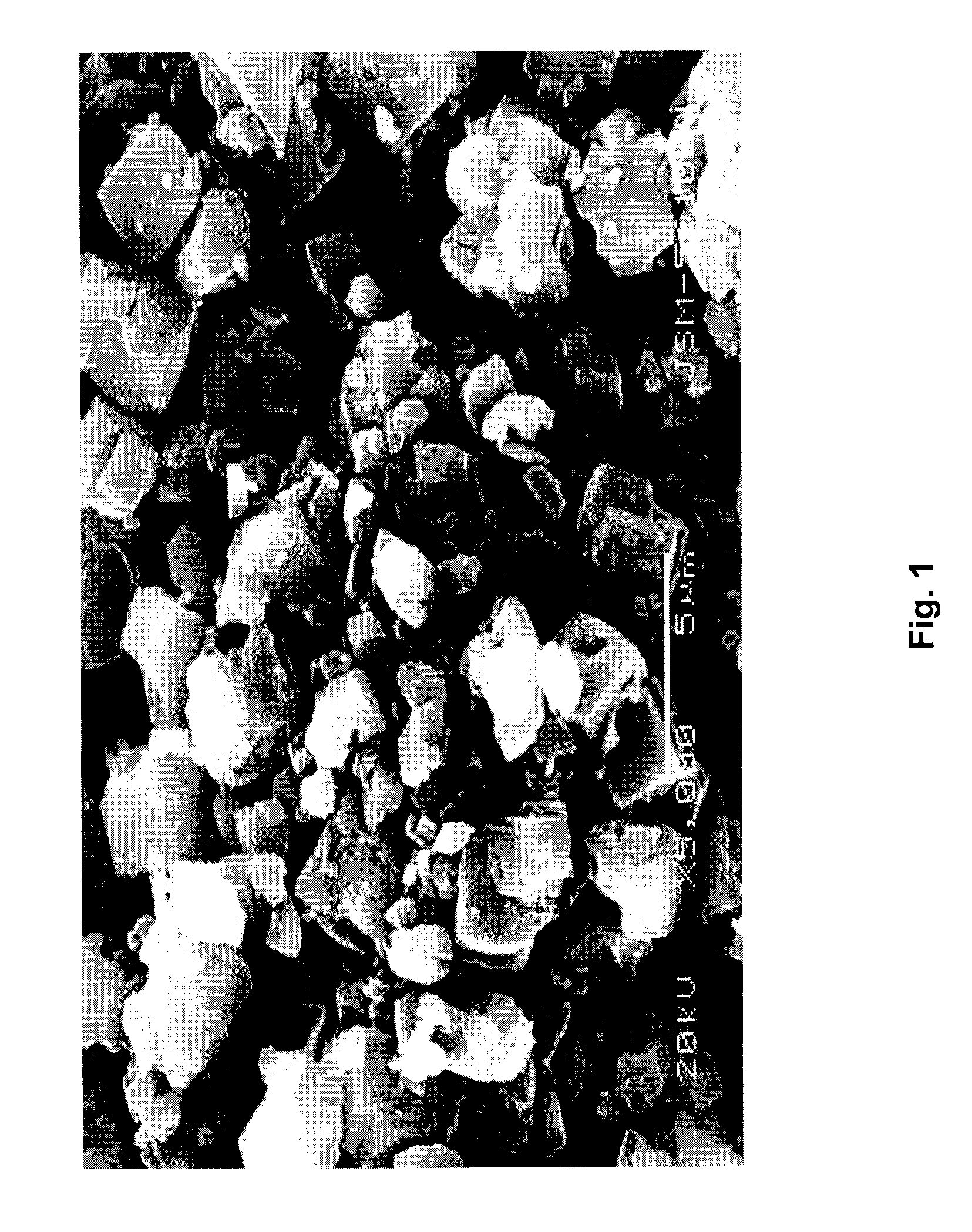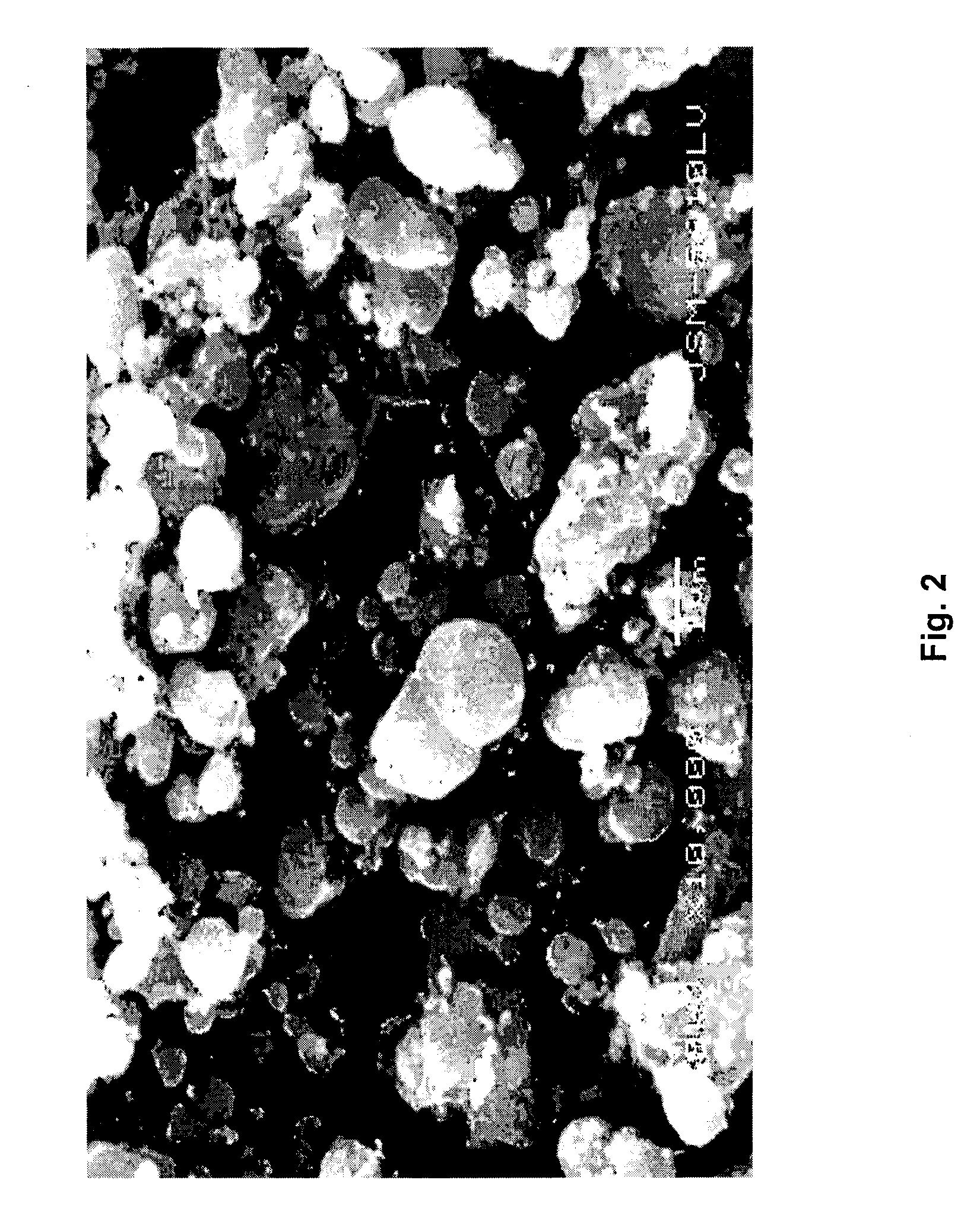Methods For Preparing Iron Source Material And Ferrous Oxalate for Lithium Ferrous Phosphate
a technology of iron source material and ferrous oxalate, which is applied in the direction of phosphorus oxyacids, chemistry apparatus and processes, cell components, etc., can solve the problems of poor electrical conductivity, affecting the doping effect, and difficult to achieve atomic level mixing of metallic doping elements and elemental iron, etc., to achieve uniform distribution of sizes and superior electrochemical properties
- Summary
- Abstract
- Description
- Claims
- Application Information
AI Technical Summary
Benefits of technology
Problems solved by technology
Method used
Image
Examples
embodiment 1
[0050]This embodiment illustrates the methods provided in the present invention of preparing iron source materials and producing lithium ferrous phosphate from said iron source materials.
[0051](1) Dissolve 9.7 moles ferrous sulfate heptahydrate and 0.3 moles magnesium sulfate heptahydrate in deionized water to form an aqueous ferrous sulfate solution with metal ion concentration of 1 mole / liter (the ratio of ferrous ions and magnesium ions in the solution is 97:3). Dissolve 10 moles of kalium oxalate in deionized water to form a kalium oxalate solution with oxalic acid ion concentration of 1 mole / liter. Pour 6 liters of deionized water into a 30 liter reaction vessel. Then use a metering pump to pump a homogeneous flow of the above mentioned ferrous sulfate and magnesium sulfate solutions into the vessel, while at the same time using a servo pump to pump a homogeneous flow of the above mentioned kalium oxalate into the vessel. The flow rate of the liquid solution containing ferrite ...
embodiment 2
[0053]This embodiment illustrates the methods provided in the present invention of preparing iron source materials and producing lithium ferrous phosphate from said iron source materials.
[0054]Iron source material and lithium ferrous phosphate are produced according to embodiment 1, the difference being that when preparing the iron source the liquid solution containing ferrite and soluble non-ferrous metal salts is prepared by dissolving 9.9 moles ferrous sulfate heptahydrate and 0.1 moles zirconium nitrate pentahydrate in deionized water, forming a liquid solution with 1 mole / liter of metal ions (the ratio of ferrous ions and zirconium ions in the solution is 99:1). The oxalate liquid solution is prepared by mixing 10 moles sodium oxalate in water to produce a solution with oxalate ion concentration of 1 mole / liter. Said liquid solution containing ferrite and soluble non-ferrous metal salts has a flow rate of 3.5 liters / hour, and the flow rate of said liquid oxalate solution gives ...
embodiment 3
[0055]This embodiment illustrates the methods provided in the present invention of preparing iron source materials and producing lithium ferrous phosphate from said iron source materials.
[0056]Iron source material and lithium ferrous phosphate are produced according to embodiment 1, the difference being that when preparing the iron source, the liquid solution containing ferrite and soluble non-ferrous metal salts is prepared by dissolving 0.8 moles ferrous sulfate and 0.2 moles manganous sulfate in deionized water, forming a liquid solution with metal ion concentration of 0.5 mole / liter (the ratio of ferrous ions and manganese ions in the solution is 4:1). The oxalate is prepared by dissolving 10 moles of kalium oxalate in deionized water to create a kalium liquid oxalate solution with oxalate ion concentration of 0.5 moles / liter. The liquid solution containing ferrite and soluble non-ferrous metal salts has a flow rate of 5 liters / hour, the flow rate of said liquid oxalate solution...
PUM
| Property | Measurement | Unit |
|---|---|---|
| temperature | aaaaa | aaaaa |
| flow rate | aaaaa | aaaaa |
| particle size distribution | aaaaa | aaaaa |
Abstract
Description
Claims
Application Information
 Login to View More
Login to View More - R&D
- Intellectual Property
- Life Sciences
- Materials
- Tech Scout
- Unparalleled Data Quality
- Higher Quality Content
- 60% Fewer Hallucinations
Browse by: Latest US Patents, China's latest patents, Technical Efficacy Thesaurus, Application Domain, Technology Topic, Popular Technical Reports.
© 2025 PatSnap. All rights reserved.Legal|Privacy policy|Modern Slavery Act Transparency Statement|Sitemap|About US| Contact US: help@patsnap.com



